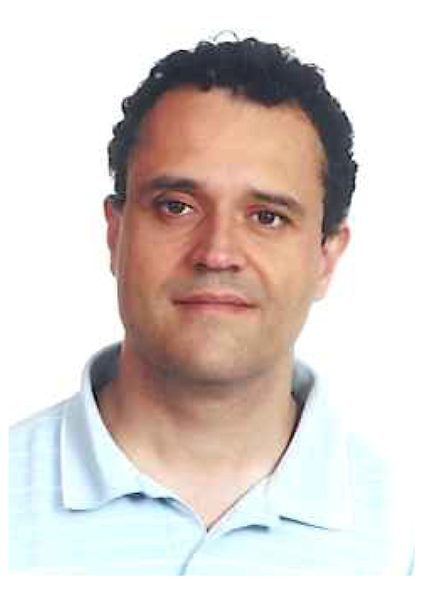Seminar "The Challenge of controlling the electron spin in Graphene" by Prof. Miguel A. Cazalilla

Date
Location
Description
Title: The Challenge of controlling the electron spin in Graphene
Speaker: Prof. Miguel A. Cazalilla
Affiliation: National Tsing Hua University / National Center for Theoretical Sciences
Abstract:
Transport of the electron spins in metals (“spintronics”) has attracted a great deal of attention over the last decades in connection with the possibility of controlling the spin for classical and quantum information storage. Despite its numerous potential applications, until recently Graphene was believed to be a rather unsuitable material for many spintronic applications due to the small spin-orbit exhibited by the light carbon atom in the sp2 bonding configuration. In recent years, many experimental groups have struggled to enhance the spin orbit coupling in Graphene by various methods.
In this talk, I will briefly describe (from a theorist’s point of view) some of the ongoing experimental efforts to achieve the goal of turning graphene into an active spintronic material (i.e. a material capable of generating spin currents) using decoration with various kinds of absorbates [1,2,3]. Despite the current rather confusing experimental situation [1,2,3], I will focus on what we can learn from the theory by using simple and well established models and controlled approximations. Thus, I will show that graphene decorated with adatoms can generate spin currents via the so-called extrinsic spin-Hall effect [4], and it will also magnetize in response to the application of an electric field [5]. A sizable contribution to this current-induced non equilibrium magnetization arises from a newly discovered direct magneto-electric coupling, which we termed anisotropic spin-precession scattering [5,6]. Signatures of this mechanism in nonlocal resistance measurements will be also discussed[6]. We will finally argue that the new mechanism should be a rather universal phenomenon in systems lacking inversion symmetry, which may be relevant for the understanding of spin-charge conversion mechanism with many potential applications.
REFERENCES
[1] J. Balakrishnan et al, Nature Communications 5, 4748 (2014);
J. Balakrishnan et al. Nature Physics 9, 284 (2013).
[2] A. A. Kaverzin and B. J. van Wees, Phys. Rev. B 91, 1652412 (2015).
[3] Y. Wang, X. Cai, J. Reutt-Robey, and M. S. Fuhrer, Phys. Rev. B 92, 161411 (2015).
[4] A. Ferreira, T. Rappoport, MAC, and A. H. Castro Neto, Phys. Rev. Lett 112,
066601 (2014); H.-Y. Yang, C. Huang, H. Ochoa, and MAC, Phys. Rev. B 93
085418 (2014). C. Huang, Y. Chong, G. Vignale, and MAC,
Phys. Rev. B 93, 165429 (2016).
[5] C. Huang, Y. Chong, and MAC, Phys. Rev. B Phys. Rev. B 94, 085414 (2016).
[6] C. Huang, Y. Chong, and MAC, report arXiv:1702.04955 (2017).
Biography:
Prof. Cazalilla graduated from the University of the Basque Country in Northern Spain, where he also obtained his PhD in Physics in 1999. His PhD work focused on the theoretical description of charge and energy exchange processes between ions and metal surfaces, as well as plasmonics. After graduation, Prof. Cazalilla joined the departments of Physics and Electrical Engineering at Brown University (US) as a visiting research associate.
At Brown, together with Brad Marston, he pioneered the first extension of the density matrix renormalization group (DMRG) to non equilibrium problems. Prof. Cazalilla was also a Postdoctoral fellow at the condensed matter theory group of the Abdus Salam International Centre for Theoretical Physics (ICTP) in Trieste (Italy).
There he started working on the theory of strongly correlated and low-dimensional ultra cold atomic systems.Over the years, Prof. Cazalilla has made several well-cited contributions to the field of ultra cold atomic gases, such as the theoretical observation of an emergent unitary-group symmetry in alkaline earth atoms, or the first analytical proof that exactly solvable models fail to thermalize to the standard Gibbsian distribution when subject to a sudden change in the Hamiltonian parameters. While remaining interested in non equilibrium dynamics of quantum systems in general, currently Prof. Cazalilla and his group at the National Tsing Hua University (NTHU) in Taiwan, are exploring new ways of controlling the electron spin In low-dimensional mesoscopic nano systems and two-dimensional materials like graphene.
Subscribe to the OIST Calendar: Right-click to download, then open in your calendar application.



